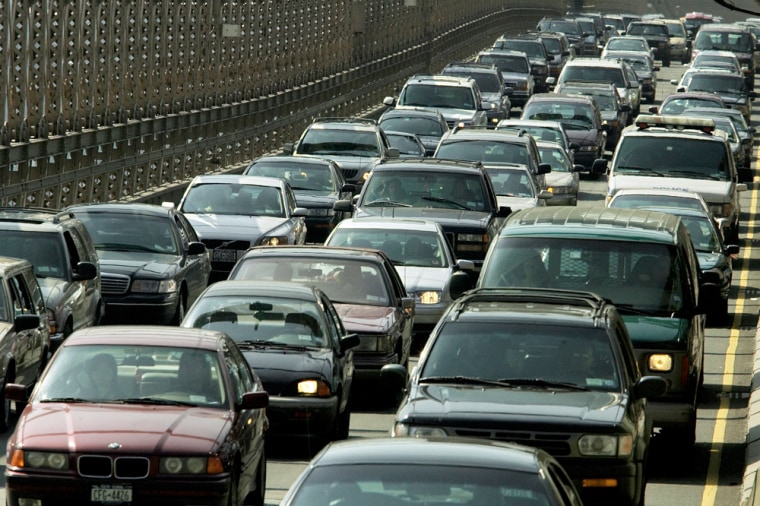No one likes commuting at a snail's pace, especially Craig Davis, who often knows why there's a backup and who has a thing or two to teach us about traffic.
"If everyone would be good citizens and move over when the signs tell you to, traffic would move more quickly," said Davis, a physicist at the University of Michigan. "It's the science of complexity. In large-group dynamics, special things happen because each individual is trying to maximize their own benefit."
In America, selfish steering costs about $100 billion a year — from wasted time and fuel — and idling motors add to air pollution. Growing cities and rising gas prices make Davis' solutions look as appealing as an empty carpool lane.
Our fault
On the road, the tunnel vision and delayed reactions of each person behind the wheel bring whole highways to a halt.
When a car in front does something unusual, drivers often respond by hitting the brakes. That in turn makes the next driver brake. Soon, waves of commuters are flashing red brake lights.
Humans typically take three-quarters of a second to slam on the brake pedal. Talking on a cell phone can slow response time even more. The delayed reaction creates instability in an otherwise steady stream of traffic.
That's when cars end up bumper to bumper.
"The slow reaction time means people brake more than they should have to," Davis said. "Unnecessary braking — too much slowing down — causes the jam to form in some instances."
Physicists tend to think of the buildup of traffic like water turning to ice.
Smooth traffic moves freely like water. When water freezes and turns to ice, it requires more energy, in the form of heat, to melt back into water. Similarly, it takes more time and work to get gridlock going again.
Davis presented his research about how to decongest the roadways at the American Physical Society meeting in March.
Automatic solution
To cut down on bottlenecks in the future, cars could come equipped with adaptive cruise control. The automatic system responds more quickly than human beings.
"Adaptive cruise control essentially eliminates the reaction time," Davis told LiveScience. "It senses if a vehicle is slowing down and will apply the brakes, in advanced models. It does not lessen the amount of traffic, but makes it flow better according to simulations."
Scientists have not yet test-driven adaptive cruise control in the real world.
In the meantime, there a few ways you can help speed things up for everyone:
- Look past the car in front of you to anticipate what's coming up ahead.
- Act altruistically. When people are trying to merge from an on-ramp, slow down and let them merge in front of you.
- Don't procrastinate. If highway construction shuts down lanes, merge early on before the lane closure.
